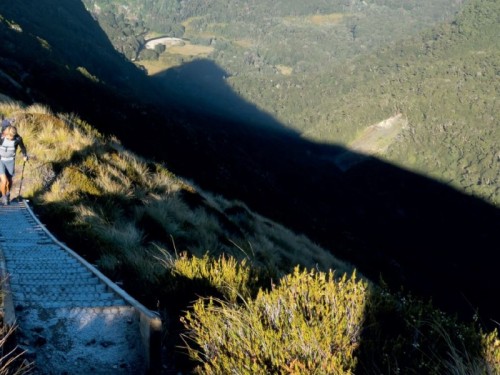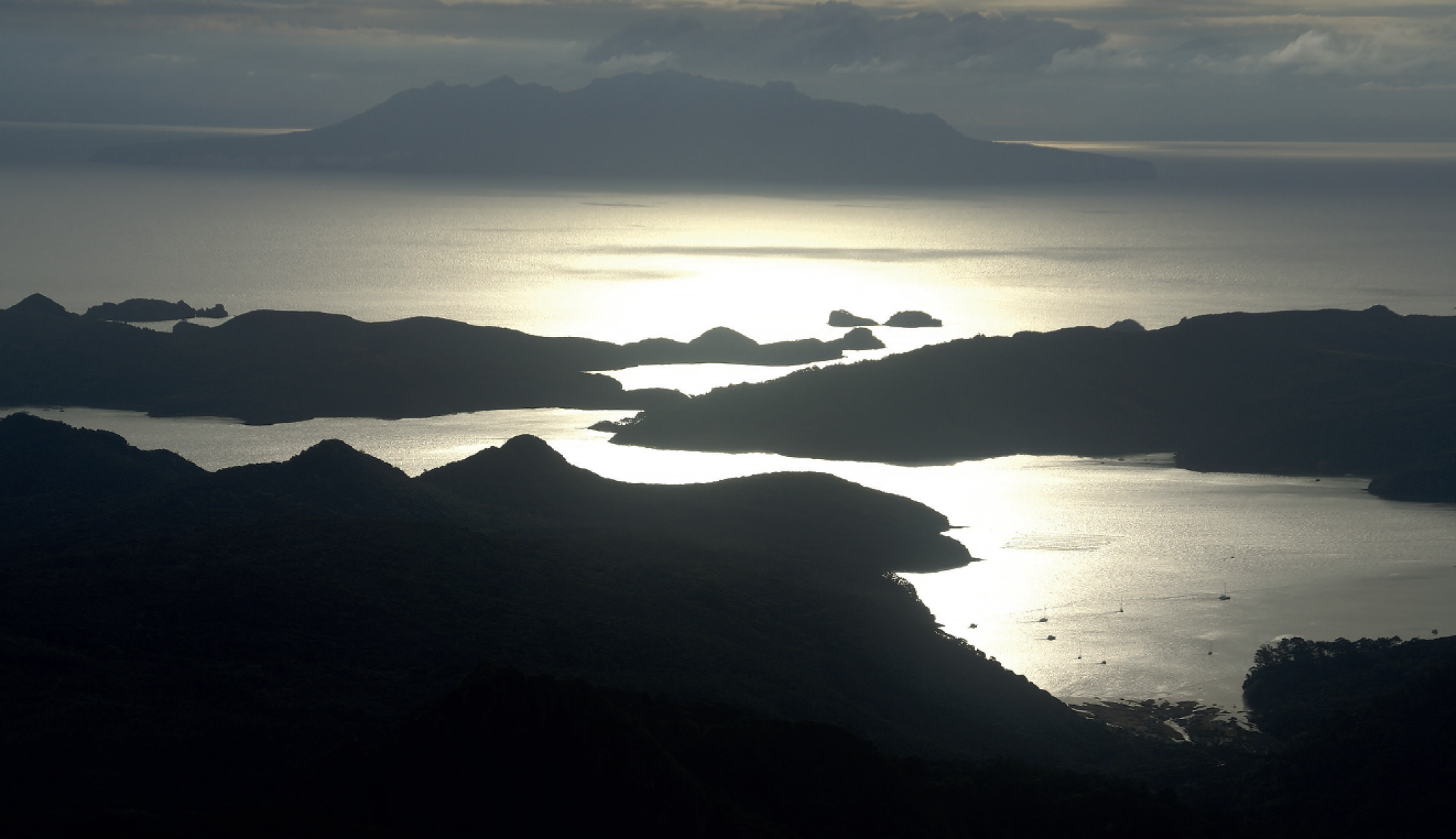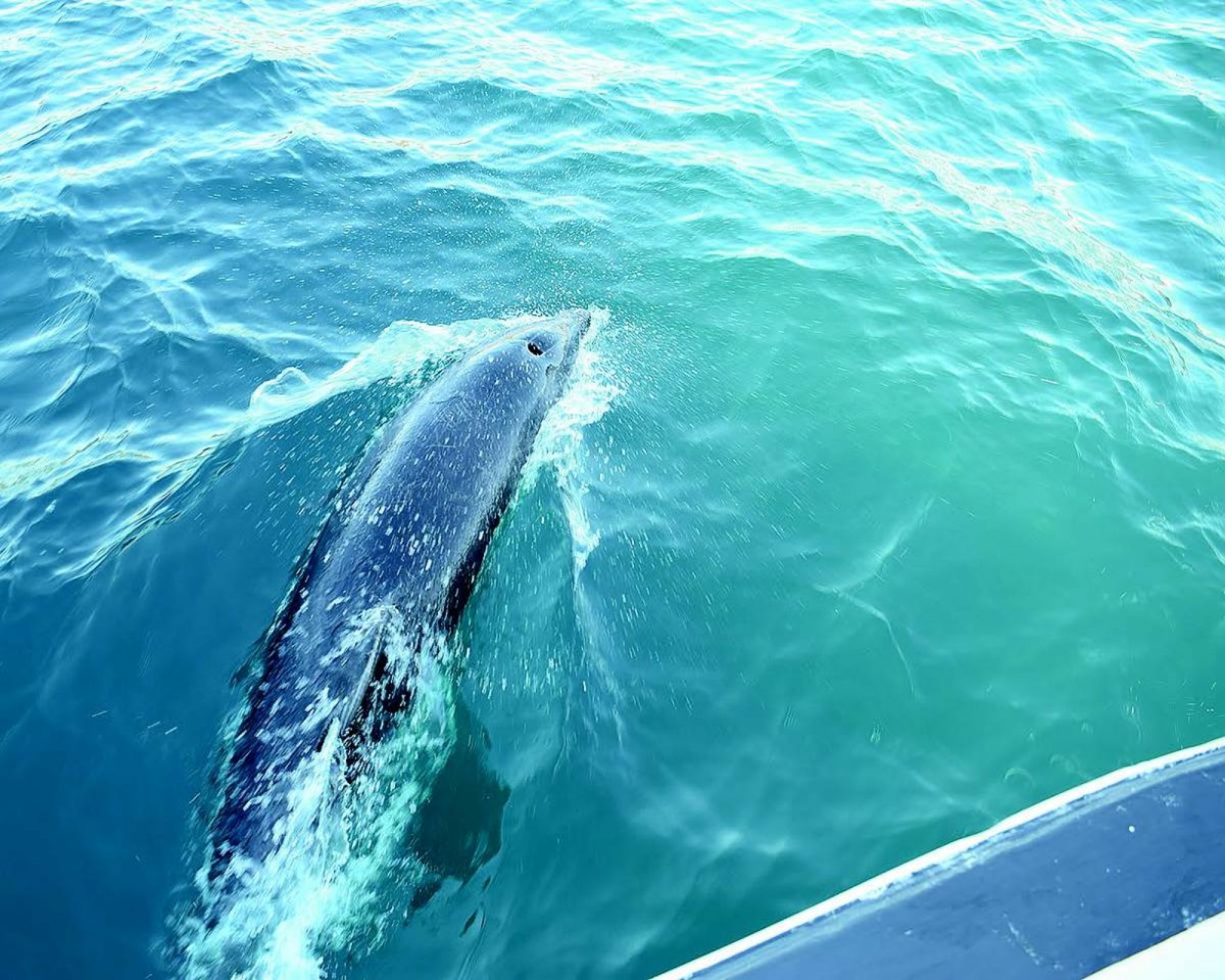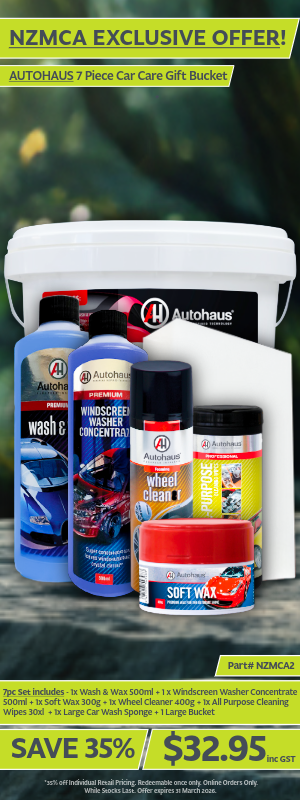This summer you can celebrate the twentieth anniversary of the Hauraki Gulf Marine Park with a trip to the Gulf’s largest island. Great Barrier Island/Aotea boasts a 12,000-hectare conservation park, stunning beaches, native birds and the natural Kaitoke Hot Springs.
Great Barrier Island can be accessed by a vehicle ferry, meaning you can take your motor caravan on an island holiday.
Where to stay
There are five motor-caravan accessible campsites on Great Barrier Island – Akapoua Bay, Awana Beach, Harataonga, Medlands Beach and Whangapoua campsites. All of them are located near beaches or estuaries. If you’re wanting to stay close to amenities, Akapou Bay Campsite is a great choice – it is near the Port Fitzroy wharf, a shop, a fuel depot and a post office. For keen surfers, try Awana Beach, Medlands Beach or Whangapoua campsites. They’re located at or near some of the island’s top surfing spots.
For campsites with safe swimming spots (either on beaches or estuaries), you can’t beat Harataonga, Whangapoua or Medlands Beach Campsites. It’s also possible to snorkel at Harataonga Beach. Awana Beach and Whangapoua campsites are excellent places to observe rare birds like brown teal/pāteke and New Zealand dotterel/ tūturiwhatu. Please do not disturb birds and take extra care during nesting season.
All five campsites require bookings in advance and do not allow dogs or fires. All have toilets, cooking shelters, untreated water from taps and cold showers. There are no powered sites available at any of the campgrounds. The DOC/NZMCA campsite pass can be used at all five motor caravan accessible campsites, except during the peak season between 20 December and the end of Waitangi Weekend (10th February 2020).
Activities
No trip to Great Barrier Island is complete without some time at the beach. There are beautiful swimming and surfing beaches on the east coast of the island; there is also a variety of diving spots around the island. If beach swimming isn’t your thing, there’s another option – the natural hot pools at Kaitoke Creek. They can be reached by an easy one-hour track (one way), suitable for wheelchairs, buggies and strollers.
There are lots of walking tracks on the island, from short walks to long day hikes. For shorter walks, try the Harataonga Loop Track, Warren’s Track or Old Lady Track at Port Fitzroy, or the stunning Windy Canyon walk. If you’re up for a challenge, Great Barrier Island also features Auckland’s only multi-day wilderness hike. The Aotea Track takes walkers through a series of stunning landscapes, from bush, to wetland, to mountain summit. There is a one-night and a two-night walking option, with accommodation available at Mt Heale and Kaiaraara Huts.
The island is an ideal destination for bird lovers. The stream and wetland areas are home to brown teal/pāteke and you can see banded rail/moho pereru, New Zealand dotterel/ tūturiwhatu and kākā around beaches and forest edges. If you spend the night at Mt Heale Hut in summer, you may hear black petrel/takoketai arriving home to their mountain-top burrows. Black petrel breed only on Great Barrier and Little Barrier Islands.
In 2017, Great Barrier Island was awarded International Dark Sky Sanctuary status by the International Dark Sky Association. There are only ten Dark Sky Sanctuaries in the world – this status is reserved for the most isolated, fragile and dark locations. The star gazing from the campsites is, literally, out of this world.
There are several heritage and archaeological sites on the island, including pa sites, historic graves and relics from whaling, mining and kauri logging. Areas of particular interest are the two cemeteries from the wreck of the SS Wairarapa in 1894, one of New Zealand’s worst maritime disasters; the historic Miners Head Copper Mine Complex; and the tramline track, a route built to transport kauri logs.
You can enjoy Aotea by kayak, boat or bike. A kayaking or boating trip in the waters around the island is a great way to appreciate the beautiful beaches, view historical landmarks and spot some marine life. Kayaks (but not boats) are available for hire on the island. There are also several mountain biking tracks. Aotea is the ancestral land of Ngāti Rehua, hapū of Ngāti wai iwi (tribe).
The memories, traditions and identity of a people with one thousand years of ancestral associations are captured in this pepeha/proverb which dates from the early arrival of the Aotea canoe:
- Aotea whakahirahira – Aotea the island of renown
- Aotea taonga maha – Aotea the island of many treasures
- Aotea utangaui – Aotea of the bountiful cargo
Hauraki Gulf Marine Park celebrates 20th anniversary
The Hauraki Gulf Marine Park/Ko te Pataka kai o Tīkapa Moana Te Moananui ā Toi is New Zealand’s only marine national park. It is the largest marine park in New Zealand, covering an enormous 1.2 million hectares and including six marine reserves. The Marine Park stretches from Auckland/ Tāmaki Makaurau, north above Hauturu/ Little Barrier Island, sweeps east to include all of Aotea/Great Barrier Island, then tracks south to include all of the Coromandel to approximately Waihi.
It is home to an extraordinary array of marine species – one quarter of all the whale and dolphin species in the world (22 of 88) live in the Hauraki Gulf and half visit the area; New Zealand fur seals/kekeno enjoy resting on the beaches of the many islands (and mainland Auckland), and common dolphins/aihe swim in the waters of the Gulf in groups numbering up to several thousand. Within the Marine Park are 30 groups of islands and more than 400 individual islets. Of the 93 islands over five hectares in size, about half (47) are free of introduced mammalian predators like rats, stoats, possums, weasels and mice. These pest-free islands are now safe havens for dozens of native forest bird species including kiwi, takahē, kōkako and tieke/saddleback.
The Hauraki Gulf is also considered one of the world’s seabird hotspots, with 20% of all seabird species in the world found here. The Gulf is a national treasure, but it needs care to thrive. If you live near Auckland, consider getting involved this year in a beach clean-up or reducing your use of plastic.
New Zealand is a windy country – lots of plastic rubbish from Auckland (such as single use straws) ends up blowing into the Gulf, where it can harm or even kill marine animals and sea birds. If you see plastic items on land, please pick them up and put them in the rubbish. The Marine Park celebrates its 20th anniversary in February 2020. It’s the perfect time to enjoy a trip out into the Gulf. You can explore the Gulf from a number of places by ferry, kayak or private boat. From walks through pest-free island sanctuaries to wine tasting tours, there’s a Gulf trip to suit everyone.
Don’t accidentally harm our forest giants - clean your gear
Kauri forests were originally abundant on Great Barrier Island, but were intensively logged for half a century, ending in the 1930s. Today, only a few areas of kauri forest remain. However, they are now under threat from kauri dieback disease, which is killing our native kauri. The disease spreads easily through the movement of soil, especially when carried on dirty footwear and animals, but also on equipment (walking poles) and vehicles too.
Stopping the spread of the disease is the best way we can help protect our precious kauri – and you can help. Before you go into areas with kauri trees, scrub and check your shoes for dirt and spray them with disinfectant – use a hygiene station whenever one is provided, when both entering and exiting the track.
Always stay on the track and if a track is closed, please respect that. Tracks are only shut when there is an extremely high risk to kauri in that area. For more information, visit: www.kauridieback.co.nz
You must be logged in to view or leave a comment.
Log inRelated content










